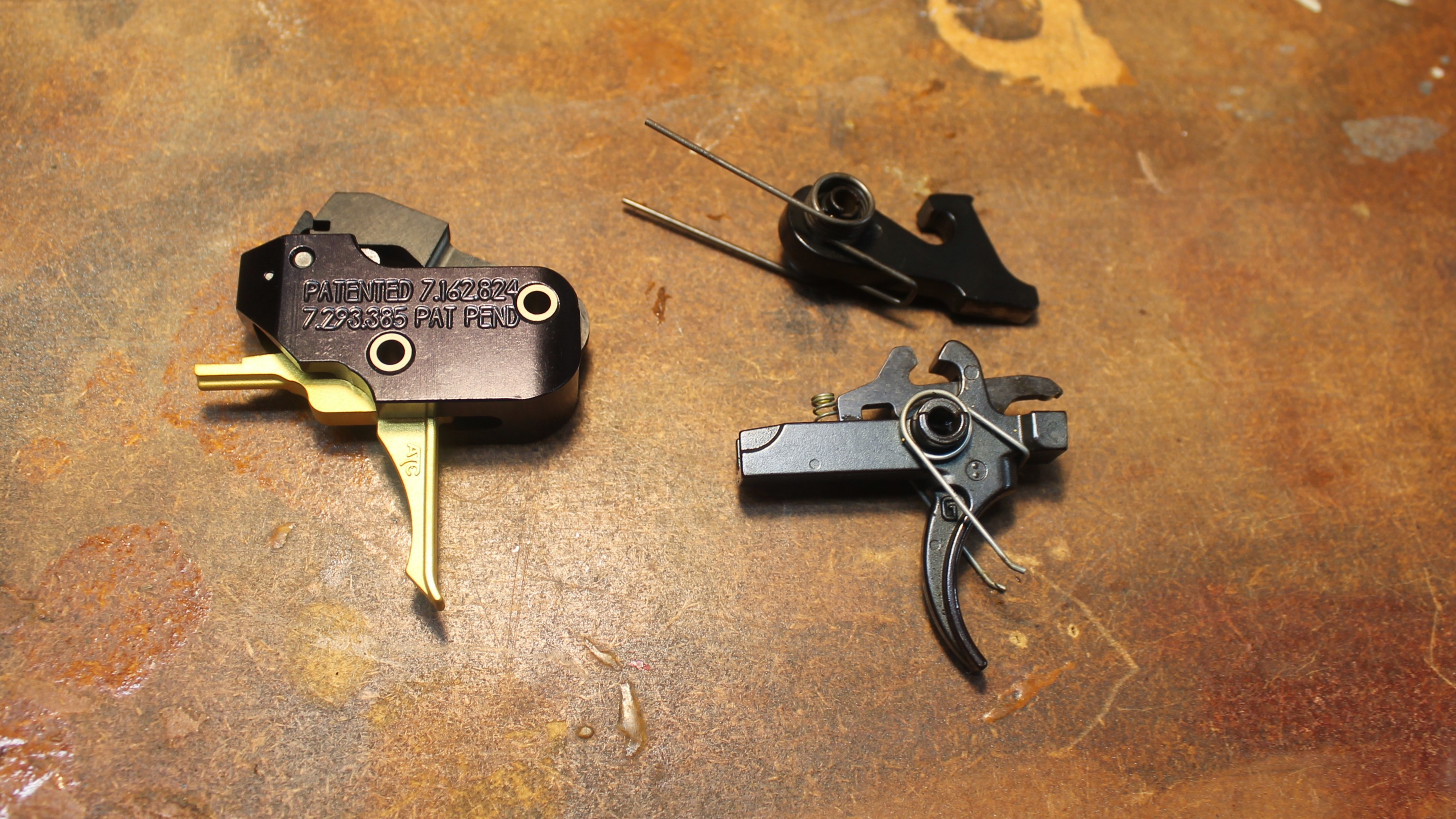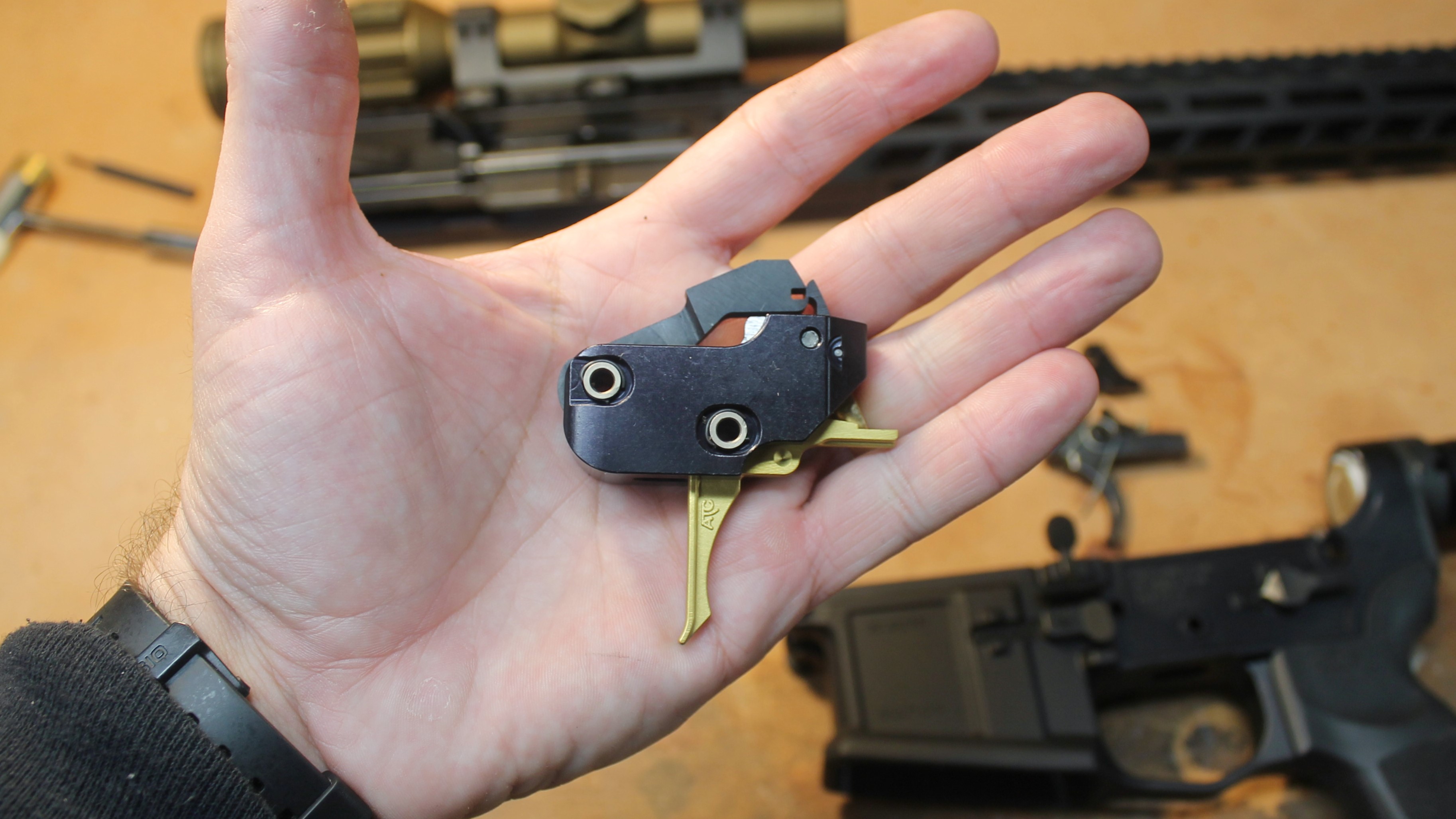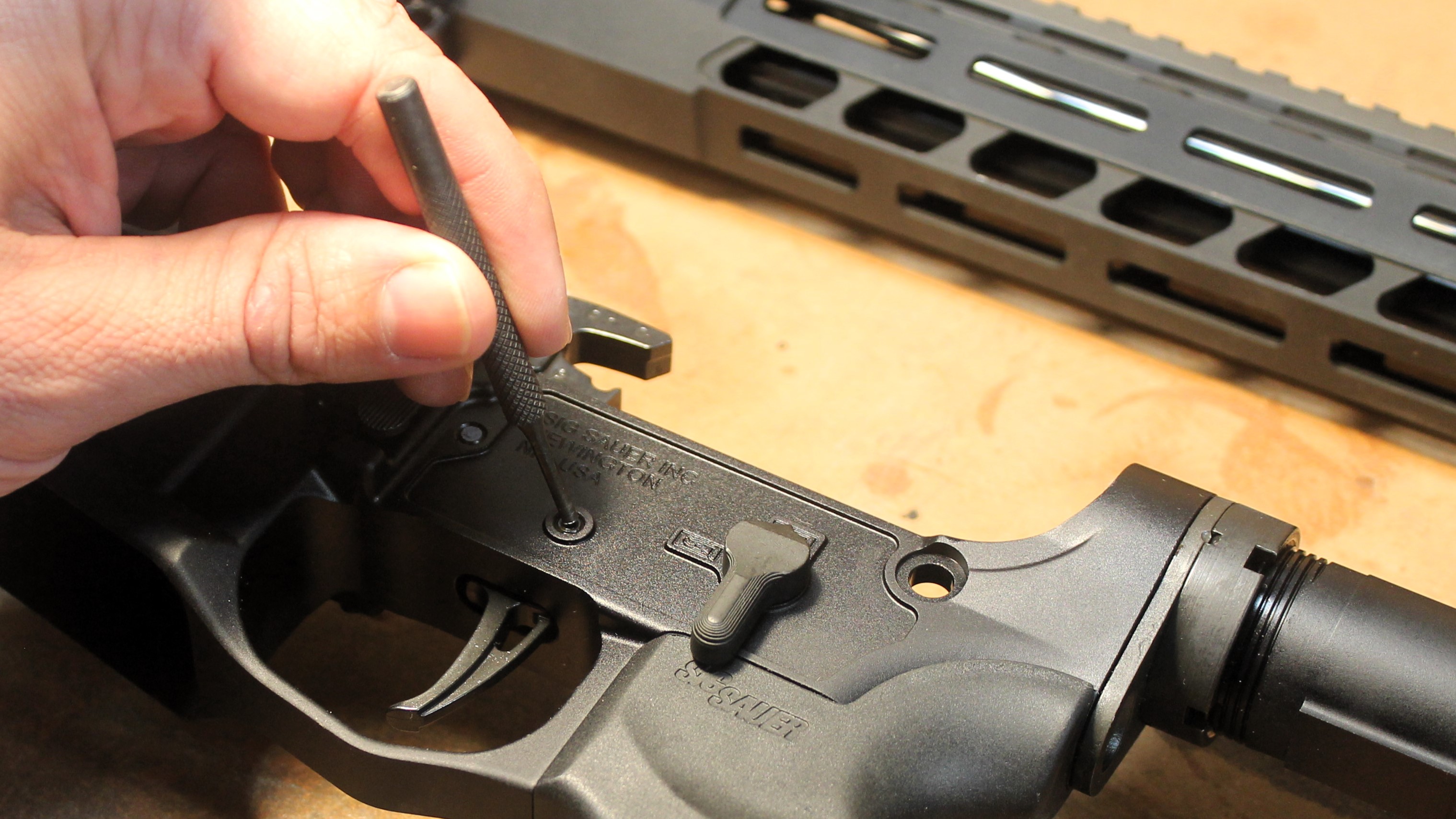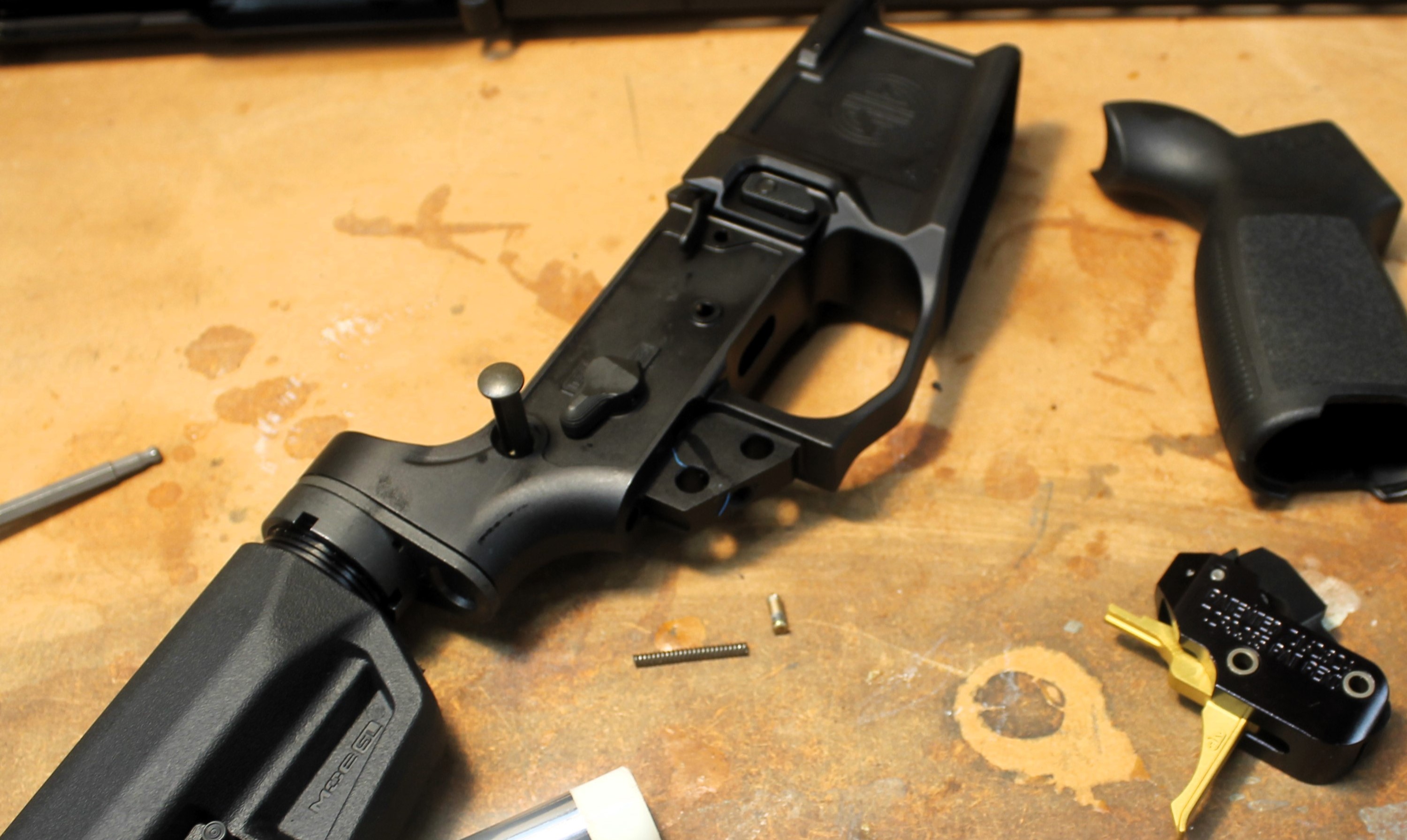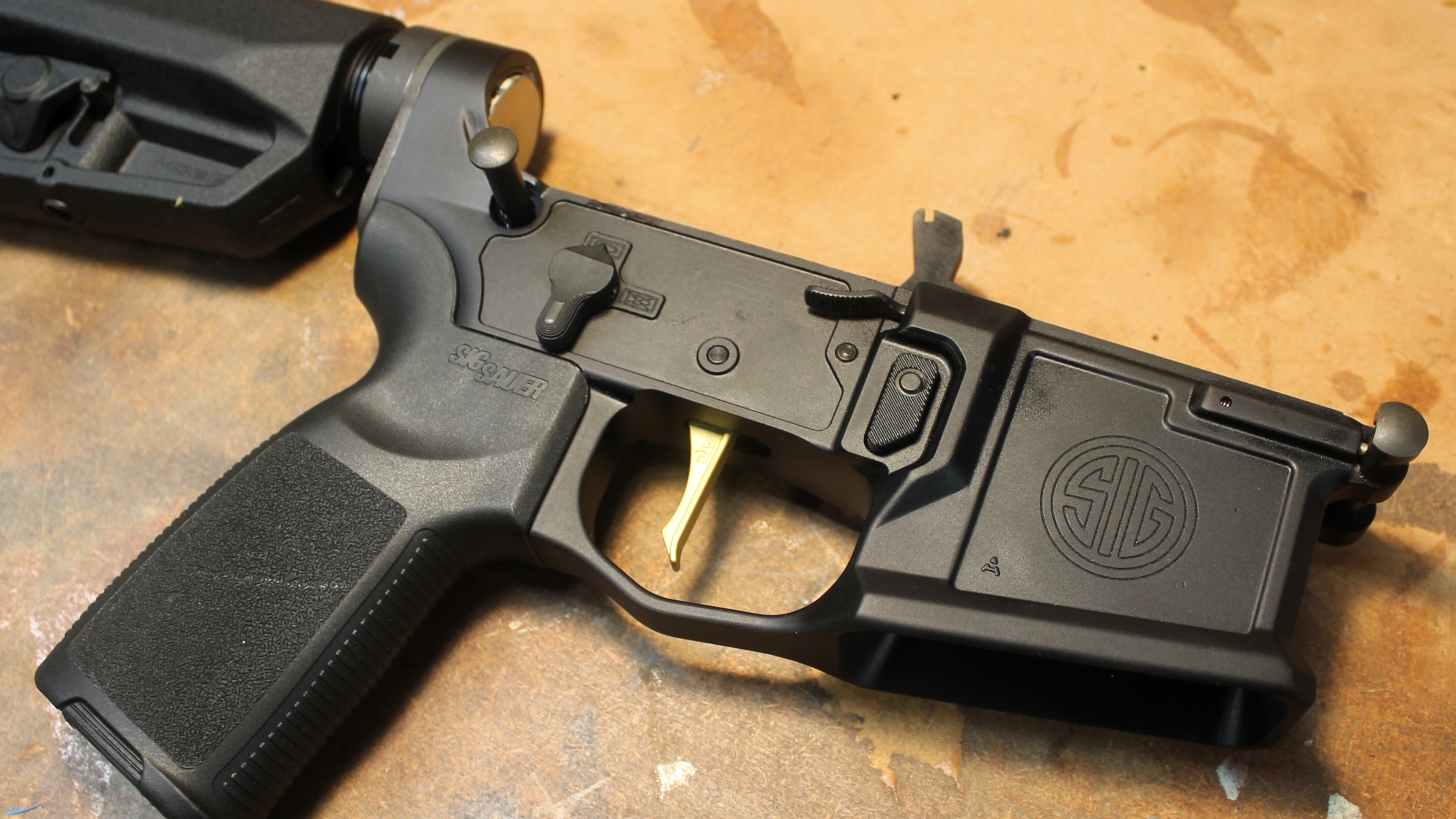One of the best things about the AR-15 platform is its customizability. Thanks to its adoption by the U.S. military, the rifle’s parts are manufactured according to standardized specifications. This gives hunters and sport shooters peace of mind when purchasing aftermarket parts because they know that, if made to spec, those barrels, grips, and bolt carrier groups will function safely in their rifles.
Same goes for the trigger. Aftermarket triggers abound, and most offer instantaneous benefits that can turn a run-of-the-mill AR-15 into a real pleasure to shoot. Swapping triggers isn’t difficult, and this article will tell you everything you need to know to make the switch.
Why Swap Triggers?
Among all the parts on a rifle, the trigger has the most influence on whether or not you hit a shot. But don’t take my word for it. Legendary firearms instructor Col. Jeff Cooper is quoted as saying, “One of the eternal truths is this: The purpose of shooting is hitting… and the consensus of the masters is that a fine trigger is the single most important desideratum in any rifle.”
Anyone can hold a reticle or iron sight on target. The difference between making a shot and missing is whether you can hold on target while pulling the trigger. A light, crisp, and consistent trigger makes that easier than a heavy, mushy, and inconsistent one. It’s as simple as that.
Choosing a Trigger
Dozens of companies offer aftermarket triggers for the AR-15, so it can be tough to know where to start. I’ll offer a few recommendations below, but you should know a few terms before you dive in.
The first is the difference between “single stage” and “two stage.” (You’d think it would be “single stage” and “double stage,” but for whatever reason, that’s not how the terms developed.) Single-stage triggers are what you’ll find on most bolt-action hunting rifles. These triggers aren’t supposed to move at all until they “break” and fire off a round.
Two-stage triggers move a small amount before they hit the “wall.” In the case of the trigger I used for this how-to, the first stage is eight ounces and the second is 3.5 pounds. This keeps the overall weight around the four-pound mark but makes the final break slightly lighter.
Single-stage triggers tend to be faster since there isn’t any movement prior to the break. Two-stage triggers are often preferred by precision shooters because they provide a tactile alert (the first stage) before breaking on the second stage.
You should also know the difference between standard and “drop-in” triggers. Standard triggers come with the springs, hammer, disconnector, and trigger blade as separate pieces while drop-in triggers come as a self-contained cartridge. Drop-in triggers are easier to install (as you’ll see below), but they also tend to be more expensive.
A Few Recommendations
If you’re on a budget, the cheapest way to upgrade your trigger is to purchase a reduced power spring kit. This won’t make the trigger crisper or more consistent, but it will reduce the trigger pull weight. Sometimes, that’s all you need to make shots more consistently.
If you have a little more cheddar to spend, I always recommend the MBT-2S Trigger from LaRue Tactical. This two-stage trigger only costs about $100, but it offers the performance of a trigger significantly more expensive.
At the top end of the spectrum are triggers from TriggerTech, Geissele, Rise Armament, the American Trigger Corporation (ATC), and others. Many of these will run north of $200, which isn’t in the cards for a lot of folks (myself included, if not for my current employment). These are top-of-the-line triggers, and the difference is clear as soon as you pull one.
For this how-to, I opted for the Fixed AR Gold trigger from ATC. ATC made the original patented drop-in trigger for the AR platform, and I’ve been extremely impressed with the product so far. Don’t get me wrong: the stock trigger on my Sig Sauer M400 SDI-X is excellent and more than capable. But I wanted a lighter trigger pull, and I knew that only something at the tip-top of the line could beat it, which is why I went with the ATC.
Step-by-Step Installation
The steps for installing a new trigger will vary depending on if you have a standard or drop-in trigger. I describe both below, but whichever you plan to install, you have to remove the current trigger first.
To do that, remove the upper receiver from the lower receiver by popping out both takedown pins. Next, remove both trigger pins with a hammer and pin punch. There are lots of pin punch sets out there designed for gunsmithing, but there’s no need to get fancy with this project. Any punch of the correct size will do.
Standard Trigger
Drop-In Trigger
- Remove the safety selector. This will vary somewhat depending on your safety selector, but you’ll definitely have to remove the pistol grip, which frees the safety selector detent and spring. Remove the selector switch and set it aside.
- Install the trigger. Set the trigger assembly into the receiver and push both pins through to secure.
- Reinstall the safety selector. Reverse the process from Step 1.
- Function check. As with the standard trigger, make sure the trigger and safety mechanism function properly. ATC also recommends a few additional safety tests, which you can check out there.
Let ‘Er Rip
Don’t be one of those people who spend money on nice gear only to stack it up in the safe. Now that you have your fancy new trigger installed, get out to the range, get faster, more accurate, have some fun. Those cartons of .223 Rem aren’t going to shoot themselves.
Read the full article here

